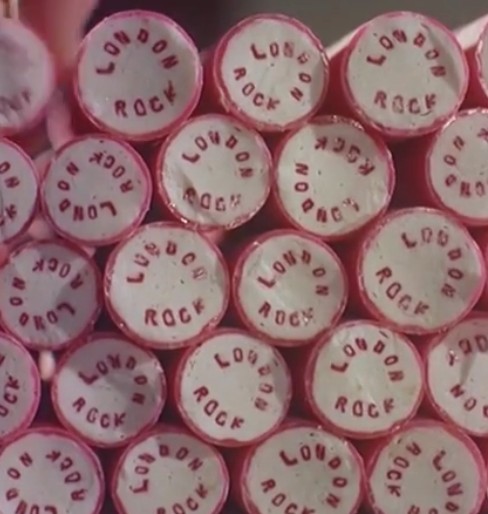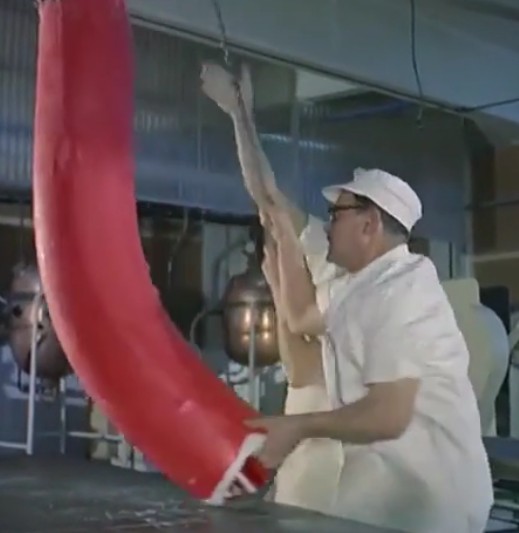Unearthed, a 1950's footage of hard rock candy being made by hand. Rock Candy has never gone out of taste or style. They taste fantastic, and their endless possibilities of flavour and colour (not to mention their beautiful patterns!) make rock candies some of our best selling promotional products. Small wonder, when they are so easy to package as well as personalise! But if you have ever wondered how they used to make the candy, wonder no more.
- A 1957 video demonstrates the complex and time-sensitive process of making rock candies by hand.
- Rock candies are visually appealing confections with a satisfying texture.
- Their popularity stems from their unique appearance, nostalgic value, educational potential, etc.
Making Confectionery The Old Fashioned Way

These treats have been around for centuries, you would be surprised, but the manufacturing process of our promotional rock candies does not differ all that much from what this video shows. Check out how these delicious candy is made in the YouTube clip below.
This retro 1957 video features "London Rock Candy" being made by hand. In this case, the two colours of the confection are continually rolled and pulled before they are finally cut to make the treats with the words "London Rock".
Traditional Candy Making Process with Muscle
The making of Rock Candy is not as simple as it seems. What makes it hard, is that it requires
- Patience
- A lot of muscle strength
- and the manufacturing process leave little to no margin for error.
A complex process by any stretch of the imagination, not only to create the individual letters but also due to time. As the toffee mixture cools it hardens, so the confectioners (incidentally, the man in the glasses at the time of the footage had been making the candy for over 35 years!) are racing against the clock.


What Are Rock Candies?
Rock candies are a type of confectionery made from large sugar crystals that form on a string or stick. They are created through a process called crystallization, in which a supersaturated sugar solution is allowed to cool and harden over time. As the sugar molecules slowly bond together, they create beautiful, transparent, and colorful crystal formations. Rock candies are typically flavored with various fruit or mint extracts and can be found in a wide range of colors. They are popular as a sweet treat, for decorative purposes, and even as an educational tool to teach children about the science of crystal growth. People enjoy rock candies for several reasons:
-
Visual appeal: Rock candies have a unique and attractive appearance, with their large, colorful, and transparent sugar crystals. This makes them eye-catching and an interesting treat to consume.
-
Texture: The hard, crunchy texture of rock candies can be satisfying for many people. Biting into the large sugar crystals offers a different experience compared to other soft or chewy candies.
-
Flavor: Rock candies are typically infused with various flavors such as fruit or mint extracts, which can make them delicious and enjoyable to eat. The sweetness of the sugar combined with these flavors creates a delightful taste sensation.
-
Nostalgia: For many people, rock candies may evoke childhood memories and a sense of nostalgia. They might remember making or enjoying these candies during special occasions, holidays, or visits to candy stores.
-
Educational value: Rock candies can serve as an educational tool, teaching children about the science of crystal growth and the process of crystallization. Making rock candies at home can be a fun and engaging activity for both kids and adults.
-
Versatility: Rock candies can be used for various purposes, such as party favors, cake decorations, or even as a sweet addition to cocktails or hot beverages.
Takeaway
The traditional process of making rock candies by hand, as showcased in a 1957 video, is a complex and labor-intensive task requiring patience, muscle strength, and precision. Despite the challenges, rock candies have remained popular for their visual appeal, unique texture, and versatility in flavors and uses.
Image first seen at https://www.figis.com/
Footage first seen at http://laughingsquid.com/a-1957-film-featuring-confectioners-shaping-london-rock-candy-by-hand-from-a-huge-roll/



